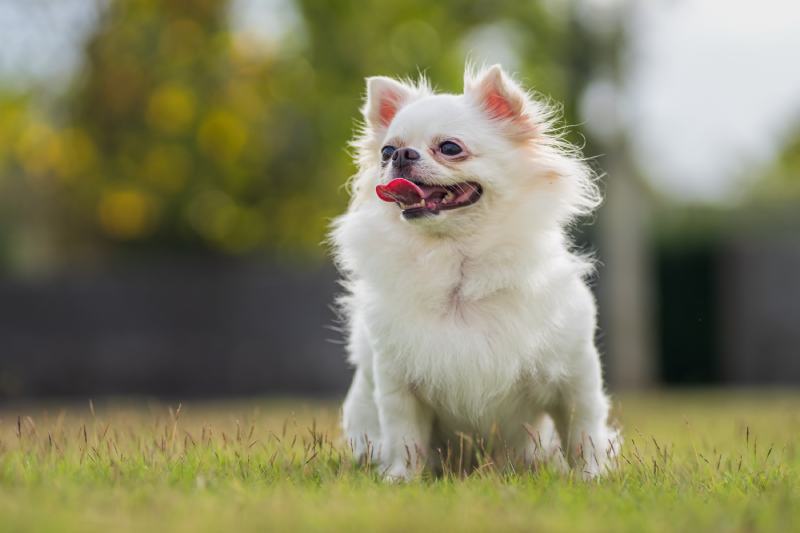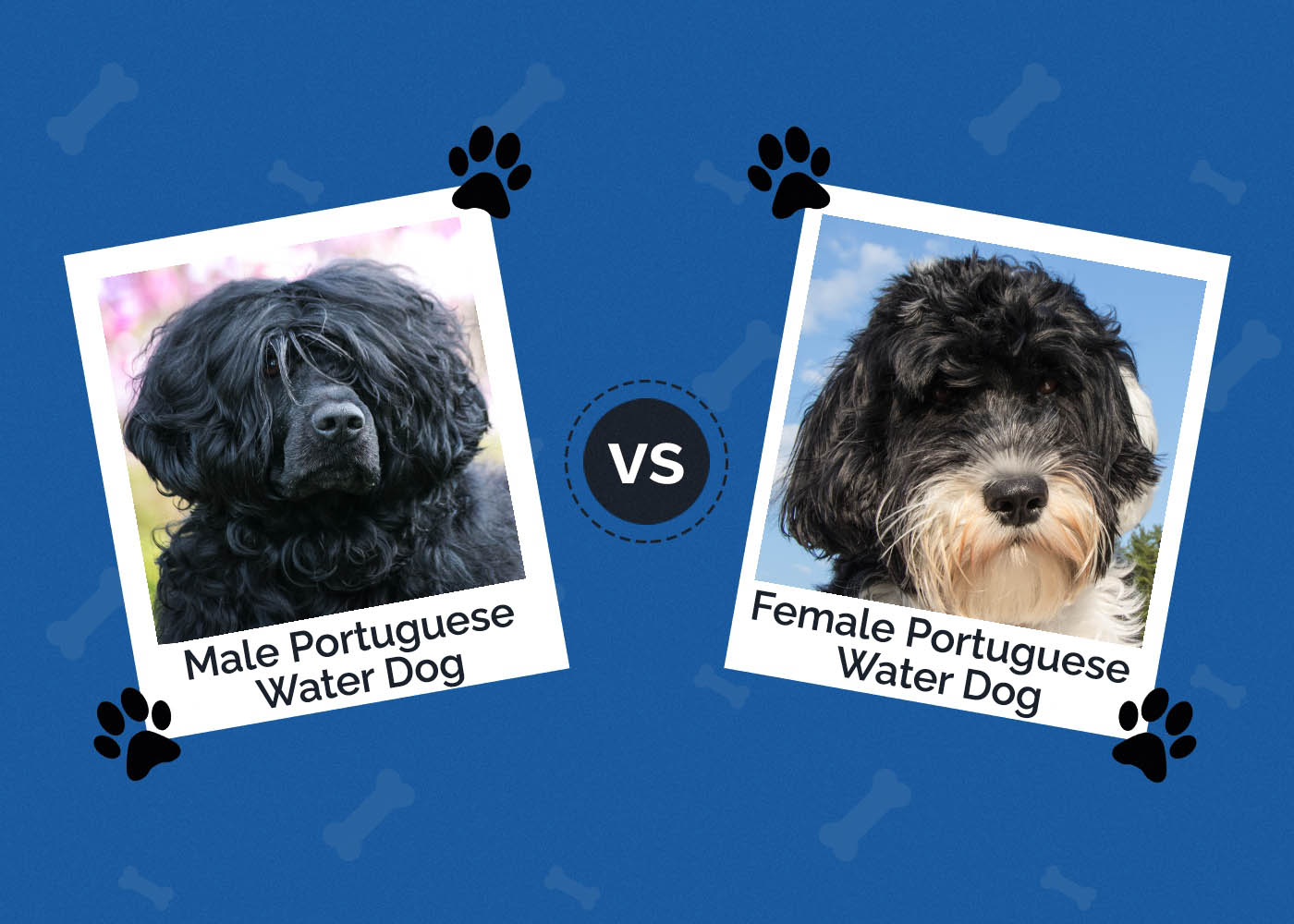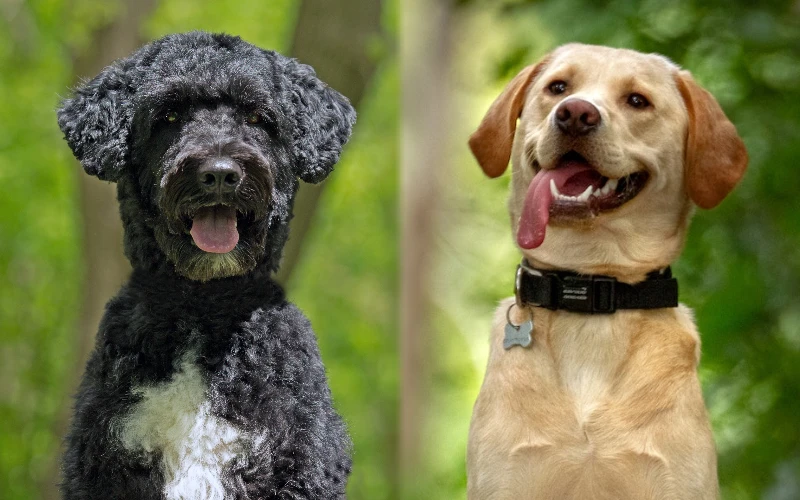Japanese Spitz vs Pomeranian: All the Differences (With Pictures)

Updated on
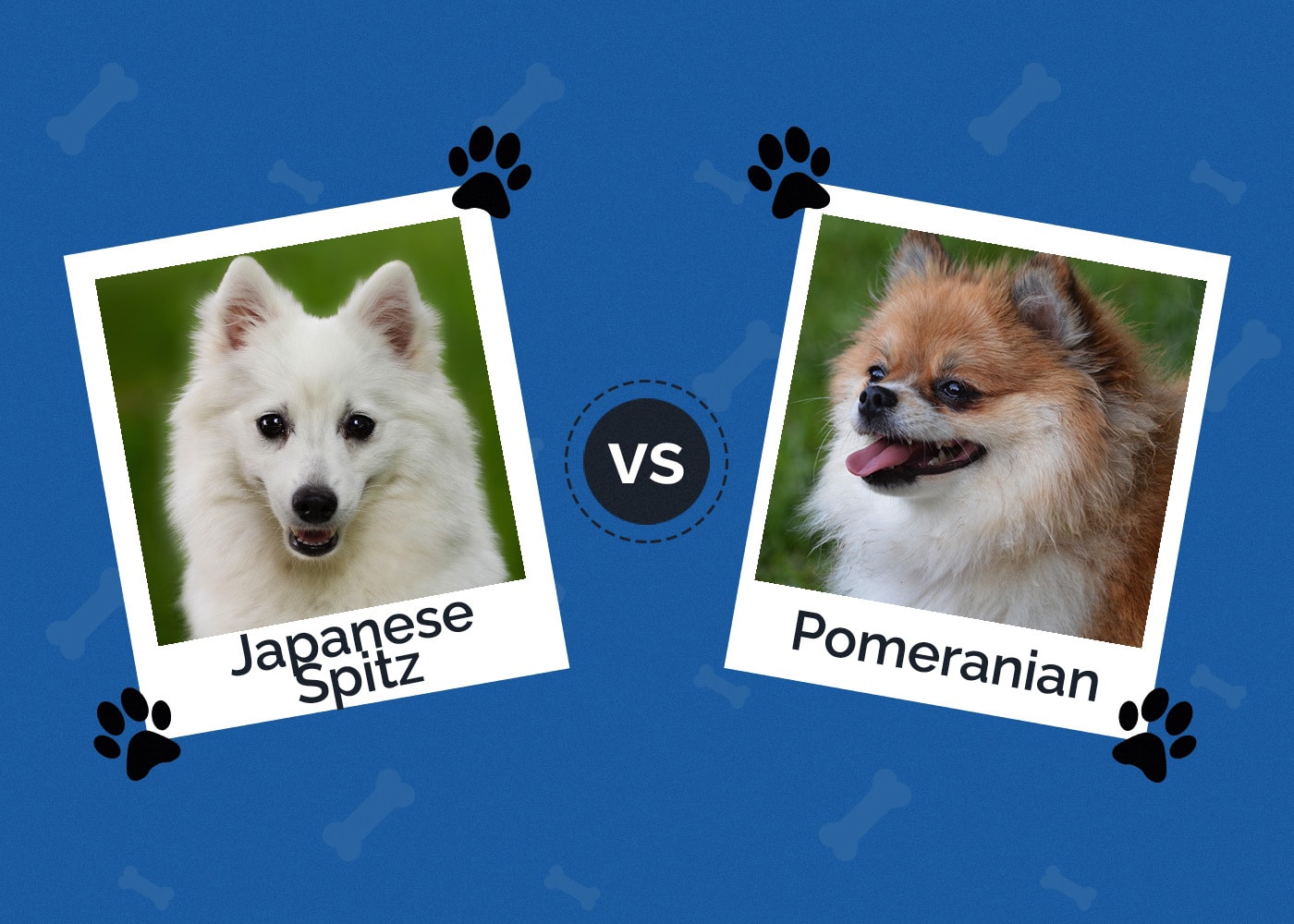
Are you trying to decide between the Japanese Spitz and the Pomeranian? Both canines belong to the group of northern dogs known as Spitz, characterized by thick, long fur, upright pointed ears, and tails that curve over the back. These dogs can be similar in some ways, but there are also many notable differences.
Dog ownership is more than a privilege—it’s also a responsibility. When you bring a pet into your life, you need to be aware of the commitment that comes with it. So before purchasing or adopting a puppy, you should ensure that the breed is a good fit for your lifestyle and family. Let’s discover which of these famous breeds is perfect for you!
Visual Differences
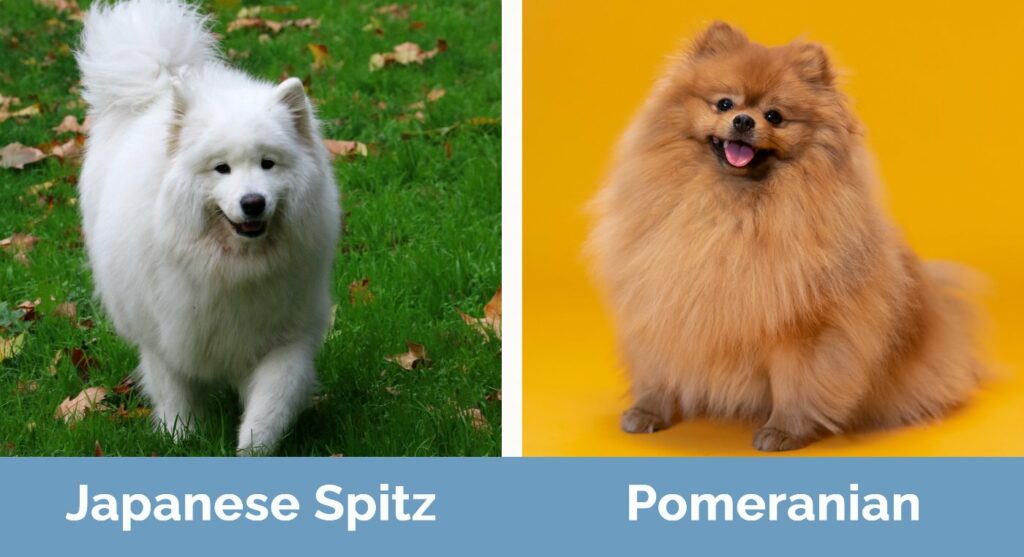
At a Glance
- Average height (adult): 10–16 inches
- Average weight (adult): 11–20 pounds
- Lifespan: 12–14 years
- Exercise: 1+ hours a day
- Grooming needs: Moderate
- Family-friendly: Yes
- Other pet-friendly: Often
- Trainability: Intelligent, eager to please
- Average height (adult): 7–12 inches
- Average weight (adult): 3–7 pounds
- Lifespan: 12–16 years
- Exercise: 30+ minutes a day
- Grooming needs: Moderate
- Family-friendly: Yes
- Other pet-friendly: Often
- Trainability: Intelligent, but a bit stubborn
Japanese Spitz Overview
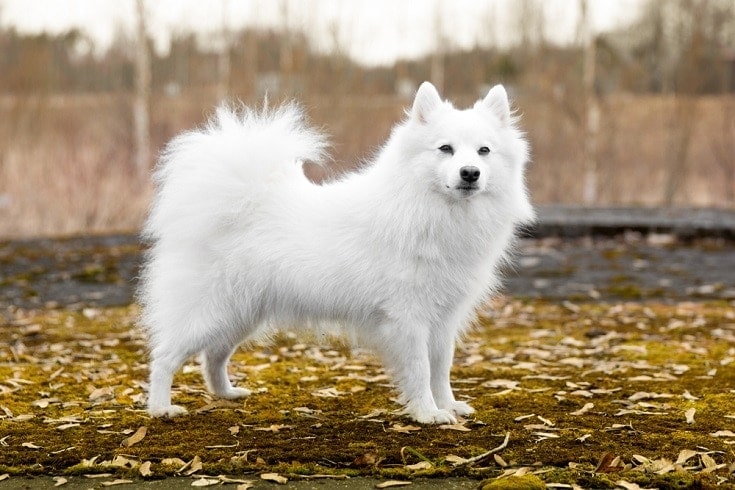
In 1921, the Japanese Spitz breed debuted in a canine show in Tokyo, Japan. They were bred to be intelligent, cute, loyal, and friendly little companion dogs. Despite not being developed as watchdogs, they still have a brave nature, an instinct to protect their families, and a loud bark for their size. As a new breed, the Japanese Spitz dogs are still gaining popularity because of their easygoing temperament, relatively low grooming needs, and capacity to get along with children and pets, among other qualities.
Appearance
The Japanese Spitz is a fluffy pup with luxuriant pure white fur, especially the ruff around their neck. That’s why people call them “cloud dogs.” Their foxy face, upright ears, and furry tail curls on the back give them an alert expression that matches their personality very well. They are also athletic and have stocky, muscular bodies.
Size
There is some debate about the proper size of the Japanese Spitz, but they are typically bigger than Pomeranians. These canines often stand between 10 and 16 inches tall at the shoulders and weigh between 11 and 20 pounds. In general, females are usually smaller than males.
Personality
The Japanese Spitz is known for having a great personality. They are loyal, affectionate, active, playful, friendly, and obedient—this may help us explain why their popularity is growing so fast. These pups are also very brave and protective. When strangers approach their area, they tend to bark surprisingly loudly, but if you reassure them, they will become calmer.
Japanese Spitz dogs get along well with kids and other pets because of their gentle and playful characters. In addition, their small size means that the chances of them accidentally knocking over children while playing are very low, making this breed a great family companion. However, these pups won’t react well if you neglect them or leave them alone for a long time.
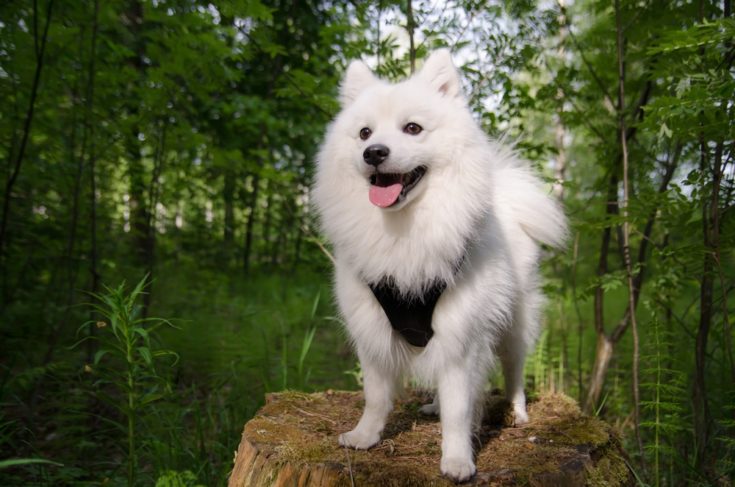
Exercise
Although not especially large, the Japanese Spitz is a fit, active dog that will benefit both physically and mentally from an hour or more of daily exercise. Because these canines are friendly with other pets, a trip to the dog park will allow them to run around, socialize, and burn off excess energy.
Training
The Japanese Spitz is intelligent and eager to please, making them highly trainable. They take motivation from positive training methods, which use low-calorie treats and fun activities to keep them interested and reinforce good behaviors. You should pay close attention to recall training because Spitz types, whatever their size, can be overly excited to go hunting! Without training, they still learn things, just not necessarily the good manners you had in mind.
Health & Care
The Japanese Spitz is a relatively healthy, active breed that can live a joyful life for up to 12 to 14 years. However, they might be prone to luxating patella, a disease that causes the kneecaps to dislocate. They could occasionally have runny eyes and dry skin from overbathing, so you should only bathe this dog when necessary. To detect and address any health issues early, owners should be on the lookout for these conditions and plan regular vet checkups.
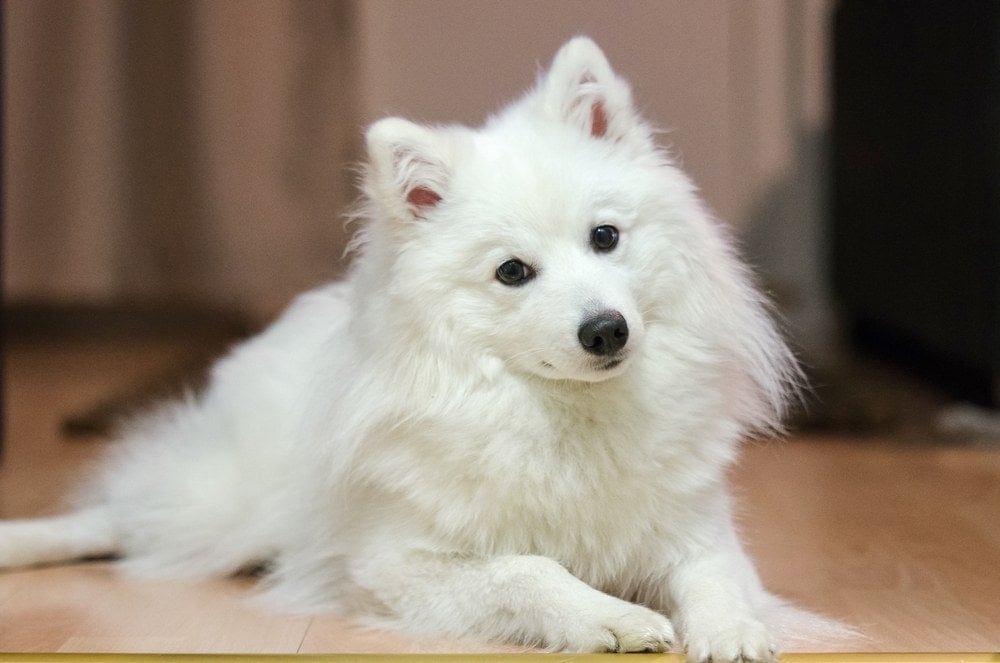
Grooming
Although Japanese Spitz dogs look like they have high grooming requirements, they don’t. These pups shed twice a year, and their entire undercoat generally blows in about 2–3 weeks. During these times, you should brush them daily, but expect that their white fur will still undoubtedly get on your furniture, clothes, and floor no matter what.
However, for most of the year, this breed needs only weekly brushing and infrequent baths unless the dog gets into something dirty and stingy. Don’t forget to check their ears and paws after walks for seeds and foreign bodies.
Suitable For:
The Japanese Spitz is a decent choice for novice dog owners as long as they are willing to accommodate this breed’s exercise needs and learn the fundamentals of responsible dog parenting. Bear in mind that these canines bark a lot, so if you live in a noisy home, it might encourage bothersome barking. In addition, even though the Japanese Spitz has a reputation for being excellent with kids, all dogs and children still need to learn how to get along and stay safe when they’re together.
Pomeranian Overview

The Pomeranian is the smallest member of the Spitz dog group. Their name comes from the province of Pomerania in Germany. They are furry, adorable, intelligent, and devoted friends. But don’t let their cuteness fool you. These bold, independent canines are curious and highly alert to their surroundings.
They gained particular notoriety after Queen Victoria allowed some of her Pomeranians—the first ever to be revealed—to join in a conformation show. Pomeranians were actually popular from the breed’s inception. Interestingly, theologian Martin Luther, artist Michelangelo, physicist Isaac Newton, and composer Mozart are among the famous individuals rumored to have owned Pomeranian-type canines.
Appearance
Like the Japanese Spitz, the Pomeranian has a thick double coat that stands out on the body and a luxurious ruffled neck. Some people also describe this dog as having a “fox-like” face because of their wedge-shaped heads, upright ears, and curled tails. Their dark, almond-shaped eyes sparkled, showing the breed’s intelligence and curiosity. The color of their noses can vary from dark to the same as their coats. One of the best things about Pomeranians is that they are available in every color and pattern you can imagine for a dog, like red, sable, black, blue, brindle, white, orange, chocolate, cream, etc. “Parti-colored” refers to white dogs with patches of any other color.
Size
Pomeranians typically range in size from 3–7 pounds and stand 7–12 inches tall. Also, puppies from certain litters can develop to be 12 to 14 pounds or more in weight, a throwback to the time when they were bigger.
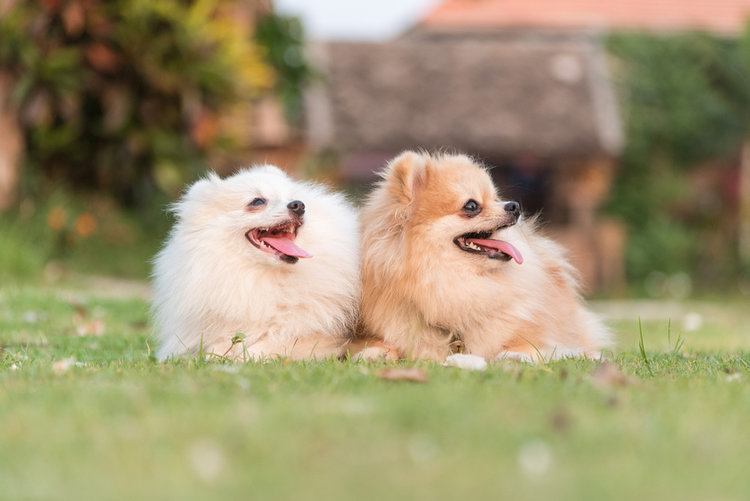
Personality
The adjectives that describe the extroverted Pomeranian are perky, curious, clever, energetic, alert, and bold. These pups love playing games and enjoy being the center of attention. They adore socializing with new people and do well with other animals. This breed can be a good watchdog because they bark at anything unusual. But Pomeranians sometimes behave like they are much larger than their small size, which can get them into trouble.
Exercise
The Pomeranian is active but small, so they only need about 30 minutes of daily exercise. When these pups are outdoors, owners must keep an eye on them at all times. They are famous for escaping through gaps in fences or small crevices or climbing over short fences. In addition, small breeds like Pomeranians can be mistaken for squirrels or rabbits by big, predatory birds like owls and hawks. Large dogs who are not supervised can also easily hurt them.
Training
Pomeranians are good at picking up new tricks, but you must be consistent and firm when training them. At the very least, you should teach them to walk on a leash and be good at recall. When it comes to toilet training toy breeds, expect it to take much longer than with larger canines.
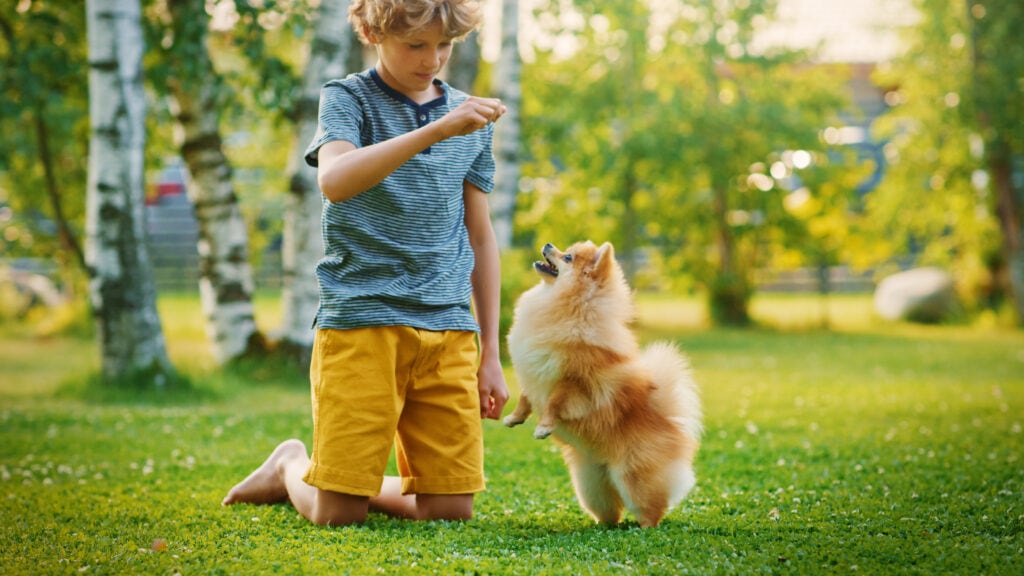
Health & Care
The average lifespan of a Pomeranian is 12 to 16 years. They are typically healthy dogs, but like all other breeds, these pups are prone to a few health problems. Trustworthy breeders should screen their flocks for health conditions like hypothyroidism, luxating patella, collapsing tracheas, seizures, congestive heart failure, and alopecia X.
Grooming
Grooming is a critical part of Pomeranian care. They are considered moderately shedding dogs despite their long, dense coat. They will shed heavily twice a year. During these periods, they require daily brushing to keep the “blowing” under control and your house clean as well.
Suitable For:
Pomeranians make great pets for first-time owners. They are also top candidates for busy people thanks to their independence. Additionally, you might want to adopt this little canine if you live in an apartment or a house without a backyard. Their small size, however, makes these pups unsuitable for families with young children who might accidentally injure them.
Which Breed Is Right for You?
The Japanese Spitz and the Pomeranian share a lot of characteristics. Both are Spitz family members and are great for first-time dog owners. They have naturally bright, friendly, and affectionate personalities, but the Pomeranian is more independent.
These breeds have similar looks, and if you want a smaller dog that comes in a variety of colors, the Pomeranian is the better option. If you are an active person who loves to exercise, the Japanese Spitz may be preferable as they also require more physical activity.
Welcoming a dog into your family is a hugely important decision, and I know it’s hard for you to decide between these two similar breeds. We hope this article has provided you with some ideas about which dog will be a better fit for your lifestyle and family.
Featured Image Credit: (L) VeronikaYa, Shutterstock | (R) Trent Pickering, Unsplash



